Design
13
min read
Designing Ethically and Practically while Profiting interview with River Gandour
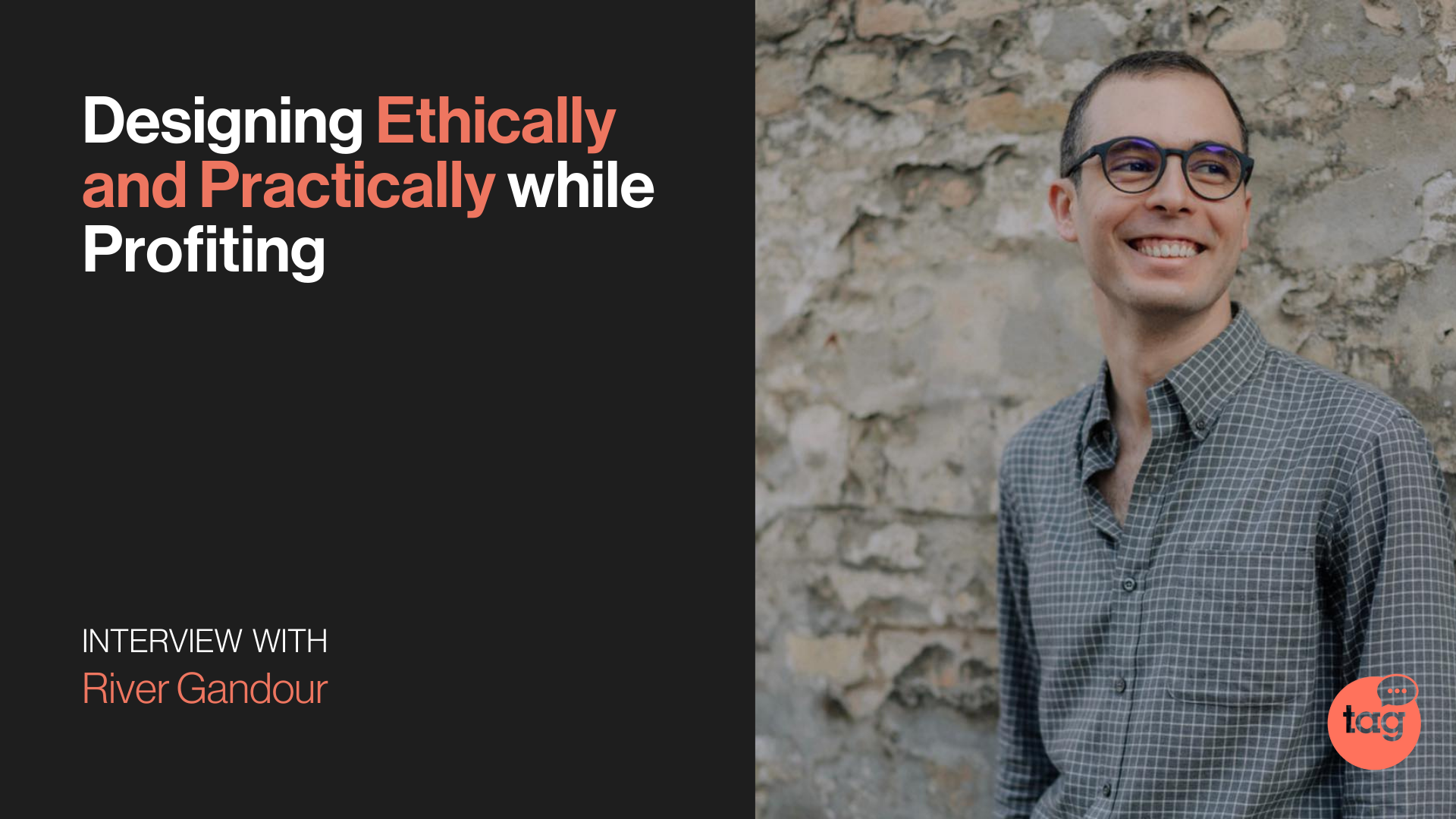

Don't you want to read? Try listening to the article in audio mode 🎧
River, can you tell us about yourself?
I made games and animations for my classmates during high school, at the time I didn’t understand the value of school, I just wanted to create things my classmates loved. I collaborated with anyone I could and once when I was just a child on my brother’s birthday I convinced all his friends to work for me in my room for another party that I was organising for the following week. I got busted by my mother when she saw the drawing slave labour I was leading. This was my first attempt at team management. After a lot of studying and tuition I finally graduated but with 10.5/100 in math, I tried 3 jobs and was fired from them all under 3 months and so in 2013 I decided to go out on my own and start a game studio. I produced my first game demo in 8 days and it was then monetized thanks to the millions of views it had the next morning. 8 months later the full release had over a million units downloaded, it became the 50th most popular PC game of 2014 but with mixed reviews. After applying design feedback, the next game was released in 2017, although a little less popular, it was exceptionally rated at 94/100. At the time as I was in the 2nd most male populated city on the planet, it’s in general challenging for any hetrosexual guy living in Dubai to find romance (as was the case for me and my friends, half of our relationships came from online interactions). In fact I used dating apps but discovered that the match rate was low and contextless, so I went on to develop a faster/contextual dating app. Upon questioning how attraction works I fell in love with sciences, particularly physics. All quantity is defined by function, like any particle or any human is defined by what they do. So then the dating app became a productivity/meetup app that fused the words Do More together “DORE” and I’ve come to establish it at Copenhagen in Talent Garden.Can you tell us what is Ethical Design?
Ethical design is providing a customer with a service with as little time, money, buttons, effort, etc as possible. Here is a categorized definition. The longer it takes to provide your service, the larger the risk of mis-delivering, followed by larger evidence that there is a design problem. Businesses that attempt to profit during validation increase risk of unethical design for the trade off of securing profit. Once profits mature there’s less incentive to alter design to not risk loss of profit, let alone re-designing. Examples: Facebook, Tinder, Nokia, Skype, Blackberry. Counterexamples: Tesla, Apple, Amazon, Discord."What is the average customer’s expectation of your service? Is that being fulfilled?"
Ethical Design Example
A good example is Overwatch, an online, 6 verses 6, video game. Each match has 6 users select from 3 roles. Users discovered dividing the 3 roles among 6 as 2/2/2, had the highest chances of winning. However this wasn’t a part of the design. The community grew extensively over the next 4 years but with soul destroying toxic arguing about the roles. Blizzard (the business) was consistently reluctant to change due to fears of losing further user base. This resulted in people ranking unfairly low because of toxic teammates who won’t play or will sabotage you, and keep you down there. Which led to users buying the game all over again, just so they could start anew. But the cycle often continued. Last year, Overwatch had locked 2/2/2 into their service. This has resulted in a new found love and sense of community for the game, arguments, mom calling, and anti-team work have significantly been reduced, reigniting interest in this profound, elon musk recommended, video game. Despite being 4 years late, this action is considered ethical design.Unethical Design Example
Tinder advertises love between humans. Studies find most humans are, and want, monogamous relationships. Which means tinder’s average customer is looking for a monogamous relationship. Tinder does not advertise specifically (specially nowadays) that they service for developing monogamous relationships, which is the expectation of their base customer. Instead Tinder has progressively adapted to the result of their original design decisions which was the period of dating, not monogamy. Then found that females are a scarcity on the platform, so it started promoting and tried to attract women. Tinder are reluctant to redesign the nature of the service they’re providing, such as the swipe design in conjunction to achieving monogamy. Tinder instead adopted the stylish bad girl, pop klutz persona to appeal. Removing base functions like knowing who liked you, or giving you fair exposure. There have been a few studies/experiments done with Tinder, often it’s found that the design is the cause for why females are scarce on the platform and men plentiful. Furthermore, it dilutes each person down to their primal sexual instincts, then amplifies it with technology. Not only average females are dissatisfied with the service, but average males have less than 1% match rate per right swipe. So by this design, making men who attempt to be selective, at all, is counter productive to the service succeeding in it’s own service, let alone achieving the customer’s expectation.What is the formula to make sure your design is ethical?
Basic Formula
What makes a product/service more valuable in any market is the rate of which a service/product delivers its outcome. The faster a business goes from A-B, the better the performance, the more valued it will become. Introducing features between A-B has potential to slow the outcome. Such as stripping base functionality of service into packets of micro transactions, ads, or simply having a longer user experience may not always be in service to the customer, especially if these functions are recurring. We should design with high entropy (as is the fundamental state of not only the physical universe, but is economically applicable too) in mind to recognize if a design is a door or wall for an outcome. What parts are inhibitors and enablers? Being aware of the fundamental structure of a design and writing new ones every 3-4 years yields greater technological and economic impact than incremental designs, as further elaborated by Jim Keller, Lead Engineer in building microprocessors for Apple & AMD. It’s important to simulate these things as much as possible before validation, if before is not feasible then it will be less feasible after. It’s in every businesses best interest to invest in fundamental redesign of their service as often as possible to maximize value of their product/service, thus maximizing potential for profit.The Attention & Intention Economy (The Short Term)
Unless enforcing law in niche cases, imposition is not valued in progressive societies. Today we have the prevalent Attention Economy, which currently capitalises particularly on advertisement. Advertisement (not to be confused with marketing) is a fundamentally undemocratic tool built in the principle of imposition (making it unethical). There are overwhelming reports ads are not in demand by the public. How do high risk companies, such as Tesla, manage to grow and sell their product with a $0 ad budget, while other scaleups/giants depend on billions of $ spending to sell?Allocating more capital into building products/services people want instead of trying to sell either non-existent simulations (i.e: pre-rendered game trailers vs actual gameplay) of the products, yields greater value for the customer. The greater and longer a customer can feel they have something spectacularly valuable, the higher the probability a ripple effect will occur among their social circles because it, for a fact, increases their quality of life. Which is the purpose of creating value.“Ads are dead. The future is about things people want, not things they must endure.” — Lou Paskalis, Bank of America
It is irresponsible to strip the global economy of advertisement due to their reliance on it (2019: $587B Industry) however, despite the demand for gas was unstoppable for power and transport, a single private company (Tesla) managed to create a market for EV not only due to political implications, but because the technology is fundamentally superior than ICE cars. It created the world’s fastest, safest, and most adaptable sedans. Incentivizing governments to take initiative and act on data regarding the effect of those resources. Which then created a feedback loop. So just as the shift from ICE cars to EV cars is trending due to clear data, It seems we’re already having a marketing renaissance taking place, shifting away from Advertising to Marketing. Now is simply a matter of who accelerates it. Young adults don’t have a lot of trust in ads. Results:“Put the vast majority of your energy, attention, and dollars into building a great product and a smaller amount into shouting about it.” — Jeff Bezos
- 28.6% “Not at all”
- 63.0% “I have little trust in ads”
- 8.2% “Yes, I trust ads”
- 0.2% “I trust ads completely”
- 9.1% “Ads on TV, online, print or environment”
- 6.4% “Online content creators”
- 8.7% “News sources”
- 2.3% “Brand content online”
- 30.7% “Online reviews”
- 42.8% “Recommendations by friends”
Competition & Capitalism (The Long Term)
Contrarian Peter Thiel, one of the world’s most sought out VCs, co-founder of paypal, Author of From Zero To One, and close friend of Musk. Claims that to create the most value for customers, startups should seek to escape competition through building ethical monopolies. Earning their right to majority market share via building a product/service that brings an outcome for the consumer at x10 the rate of speed relative to its competitors. Which comes back to the original discussion on designing Ethical Products. The only way it is possible for a startup to achieve a monopoly is by developing a product/service that creates value for the customer at x10 speed relative to competition. In other words, nowadays It is only possible (and inevitable if avoided) by designing ethically. Theil makes the claim that competition and capitalism aren’t mutually inclusive as capitalism is about maximizing capital, while competition neutralizes it. Within the discussion of ethical design of products/services on the long term, to maximize the goodness in the world regardless of market, politics, or tradition. The end product is the product, not competition, not yelling, but the goodness we can produce for others. Our most valued inventors didn’t invent out of competition but a deep desire to create great goodness. Summary of Zero To One, which has been praised by many, notably by renown investor/author George Gilder, to be “the greatest business book ever written” as it focuses less on profit, and more on building an exciting future and increasing goodness for ourselves and our children. The UN’s 2030 goals for sustainability isn’t a feasible goal to achieve by having 10,000 10-person startups, but by Blitzscaling 10 10,000-person scaleups, authors of Blitzscaling, Reid Hoffman and Chris Yeh write in their book.In 2020, a time of constant tech disruption and uncertainty, what are the biggest trends emerging for social design and technology?
Covid highlighted the impractical nature of current social network design and the dominance of social media (although this was already understood in the 2000s).So we poured money into the most practical social tech, video call. The closest thing current social tech brings us to a human. Had there been a service that allows for individuals to physically connect each other at homes, the psychological suffering would’ve lessened. The Auto-MatchMaker and Exclusive Activities features are likely to be adopted by the market, assuming Dore succeeds in blitzscaling. These two main features integrate the users from one end to the other in the physical world that we exist in. A service like Dore (with an auto-matchmaking system) has been technically possible since 44 years ago (1973) with the Dawn of LAN, 25 years ago (1995) with the Dawn of Public Internet, 12 year ago (2008) with the release of the App Store, or a few years ago depending on the narrative. Of course using just LAN is less effective than WEB, as just WEB is less effective than the app format.“Social Media can be called a strategy and an outlet for broadcasting, while Social Networking is a tool and a utility for connecting with others” (Cohen, 2009; Stelzner, 2009).
Is there a way to design practically and ethically while profiting?
Create simple revenue models, then focus on the product. As Jim Keller stated earlier, it’s a matter of how the problem/opportunity in a product/service is divided. By redesigning, the startup is reignited in the enterprise. Complex revenue models will inevitably lead to customer exploitation and businesses allocating more resources. Set a price tag or a very simple subscription. You can always adjust pricing as you grow your business. In 2013, a $60 game product with no ads or micro-transactions was the fastest selling entertainment product in history. Reaching $1 Billion revenue (17M units sold) in only 3 days. Netflix is another example, exceptionally accessible, imports and creates entertainment for a cheap subscription of $8 per month. Tesla Inc, increasingly reducing costs of each product excessively through the years. Which only makes their products more accessible, to sell more units. While increasing its features per product most of the time, for free. We see this practice often in the games industry. Tesla is a prime example of ethical design. Blitzscaling illustrates the value of networking effects over pricing or steady strategic growth. There is a lot of evidence why we don’t have to worry too obsessively on pricing before seizing a market. Amazon, Facebook, QQ, Microsoft, Dropbox, and many other notable companies are examples of companies that blitzscaled. With Dore I made the mistake of overthinking the revenue model. A free app with free activities became my focus. I developed a basic plan for pricing, a simple subscription model for B2B, sending traffic to physical businesses.Can you share more about your startup and the potential impact of DORE?
A-B:
It takes 3 buttons to use Dore for an activity:- Cover Page [GO]
- Activity Page [Football]
- Activity Description [GO]
Delightfulness
Although this functionally is direct and simple, I’ve invested everything into the design/animation/music so that it feels delightful to use, press, and explore. My intention is to get as close as possible, to making you feel like a disney princess going out. Additionally I’ve learnt from the games industry how users love exploring secrets in games, so I’ve imbued Dore with secret features/activities you can find by exploring. Then rewarded with achievements if you do.Health
Dore is the first social app that will respect your circadian rhythm. As of 2020’s plan, Dore opens at 10AM-10PM, while opening at 5AM-10PM on weekends and holidays. This is to incentivize early sleep assuming it takes off with a younger audience. Without spoiling trade secrets, each activity has some benefit to the user in the form of mental, social or physical. So if a user doesn’t know what they’re looking for but are looking for a feeling, we’re aware of that and serve it in the form of 'Activity Effects' users can seek out. Additionally, comments/likes/videos are for the most part removed as they break the A-B flow. Profiles [Called Shapes] shape your profile graphically depending on the activities a user engages in. Cooking activities where Dore supplies foods are carbon neutral, age slowing/reversing, and tasteful. Users are free to cook with non-plant meats, however it’s on them to supply after reading our recommendation on the matter.Community
The activities selected are representative not of the social market or ‘Top 10 things to do in CPH’ articles. But rather based on qualitative paid data on the city’s hobbies and activities followed by a little imagination. What activities do we care about daily, weekly and monthly. Then how do we serve it?Skills/Experience
We’ve defined real world skills into a simple levelling system, from cooking to language acquisition. Or your current season’s experience level with Football/Basketball/etc to better match you with users.
Article updated on: 09 August 2023

Don't Waste Your Talent. Turn It Into a Career With a Course That Fits Your Needs!
Talent Garden is your Digital Skills Academy, offering courses in Digital Marketing, UX Design, Digital HR and Data Analysis designed to launch your career.
Keep reading
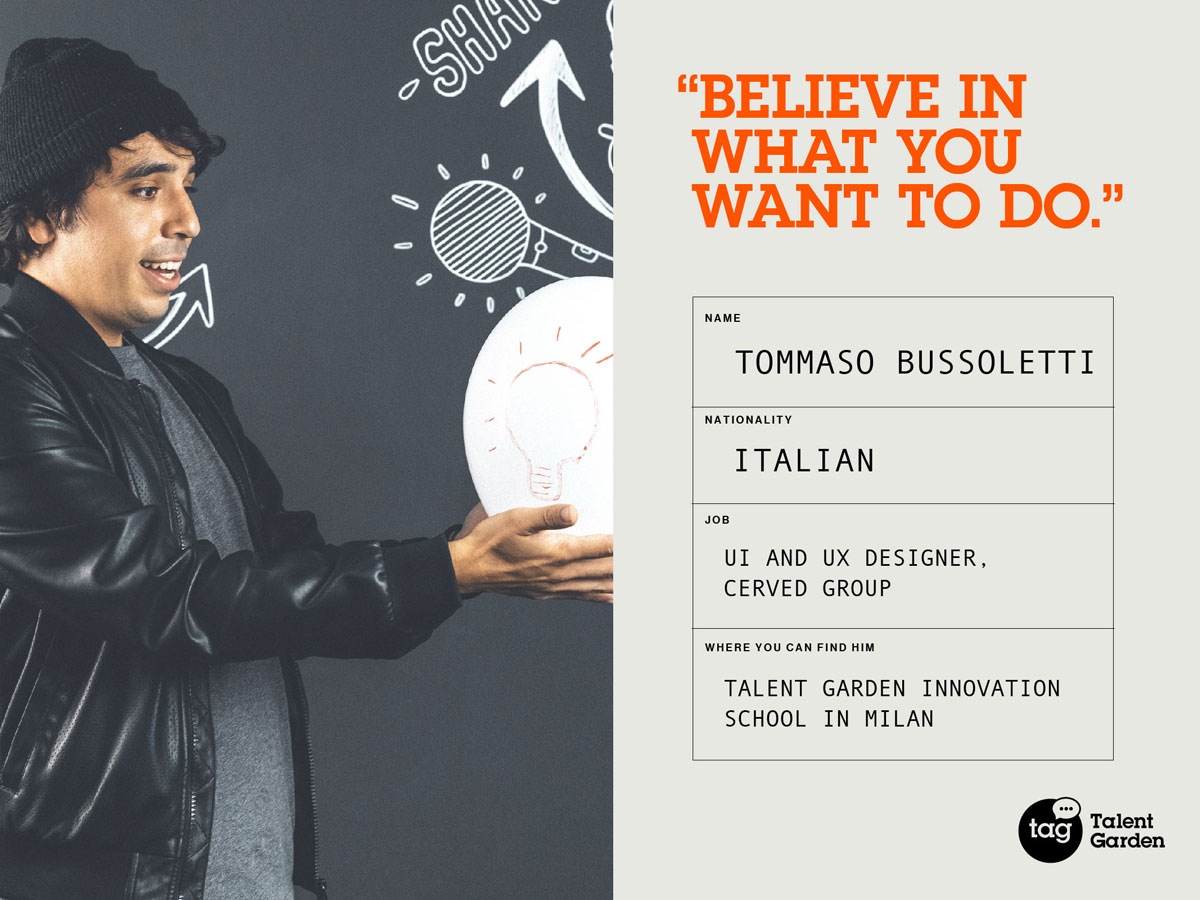
2
min read
Meet our Community: Tommaso Bussoletti, UI & UX Designer at Cerved Group
“Believe in what you want to do.” Tommaso Bussoletti UI/UX Designer at Cerved Group and Talent Garden Innovation School ...
Talent Garden
08/12/2019
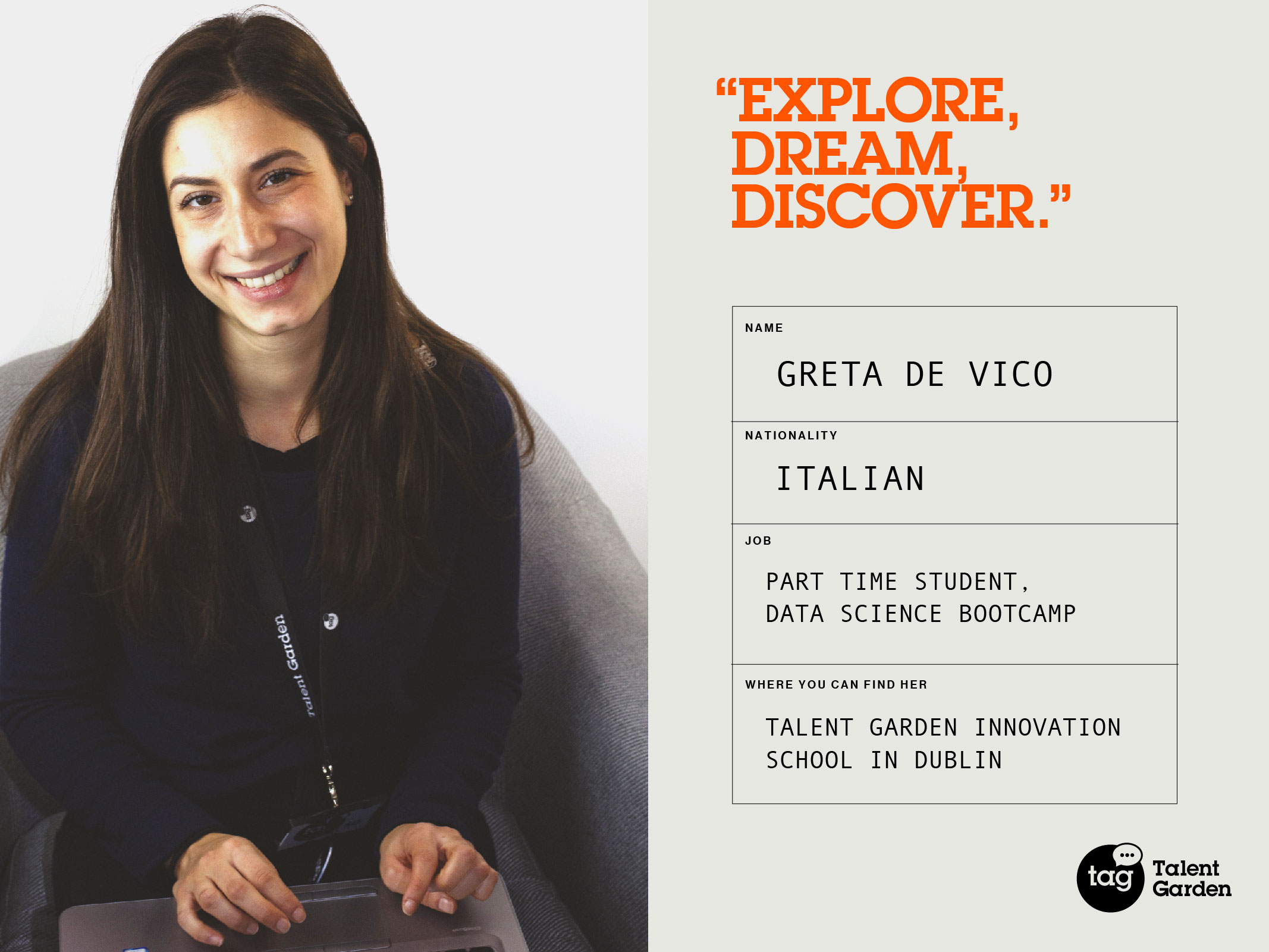
2
min read
Meet our Community: Greta De Vico, Data Visualisation Bootcamp Student
“Explore, Dream, Discover.” Greta De Vico, Data Visualisation Bootcamp Student at the Talent Garden Innovation School ...
Talent Garden
08/12/2019
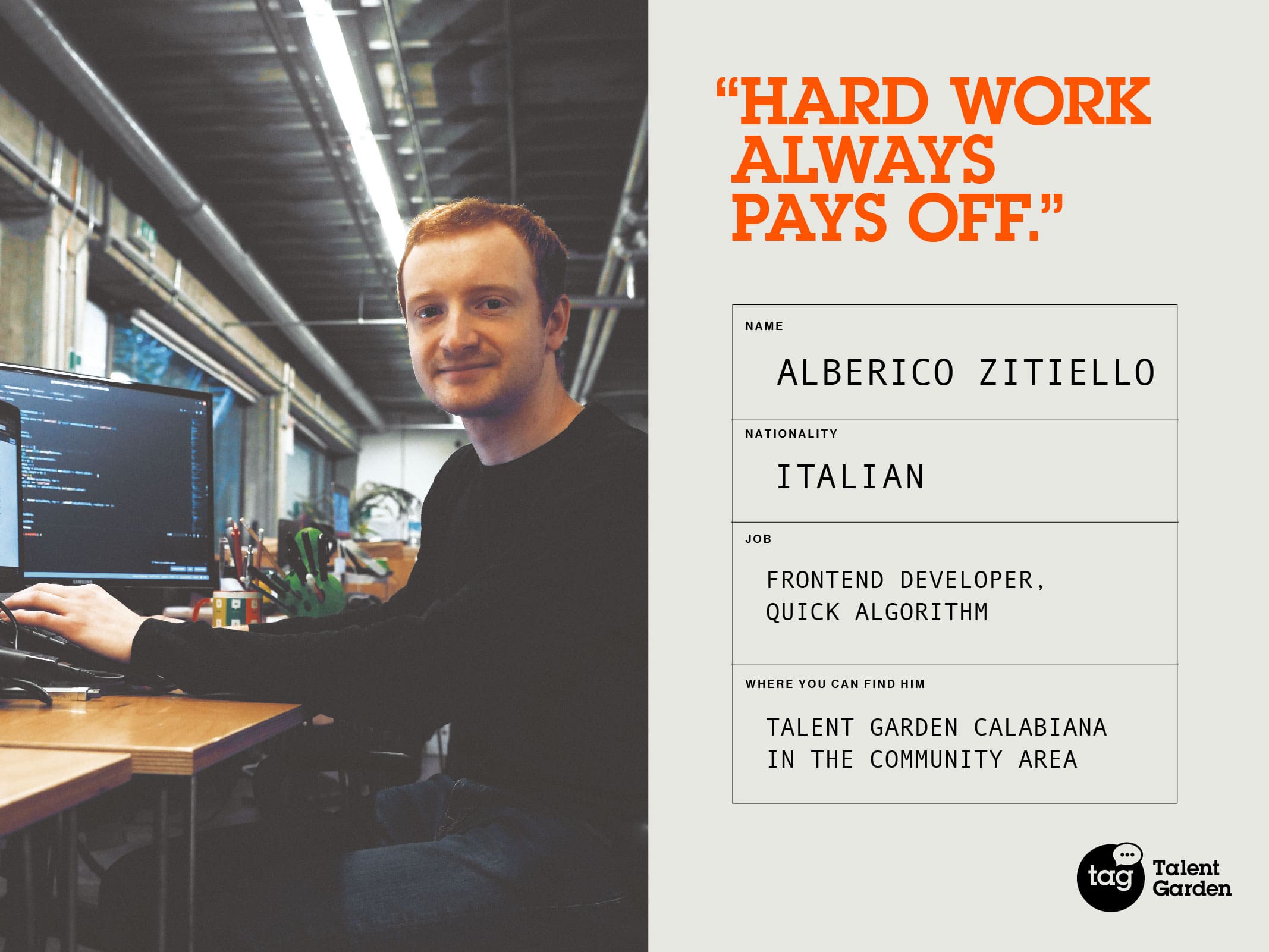
2
min read
Meet our Community: Alberico Zitiello, CodeMaster Graduate
“Hard work always pays off” Alberico Zitiello, Frontend Developer at Quick Algorithm and Talent Garden Innovation ...
Talent Garden
08/12/2019
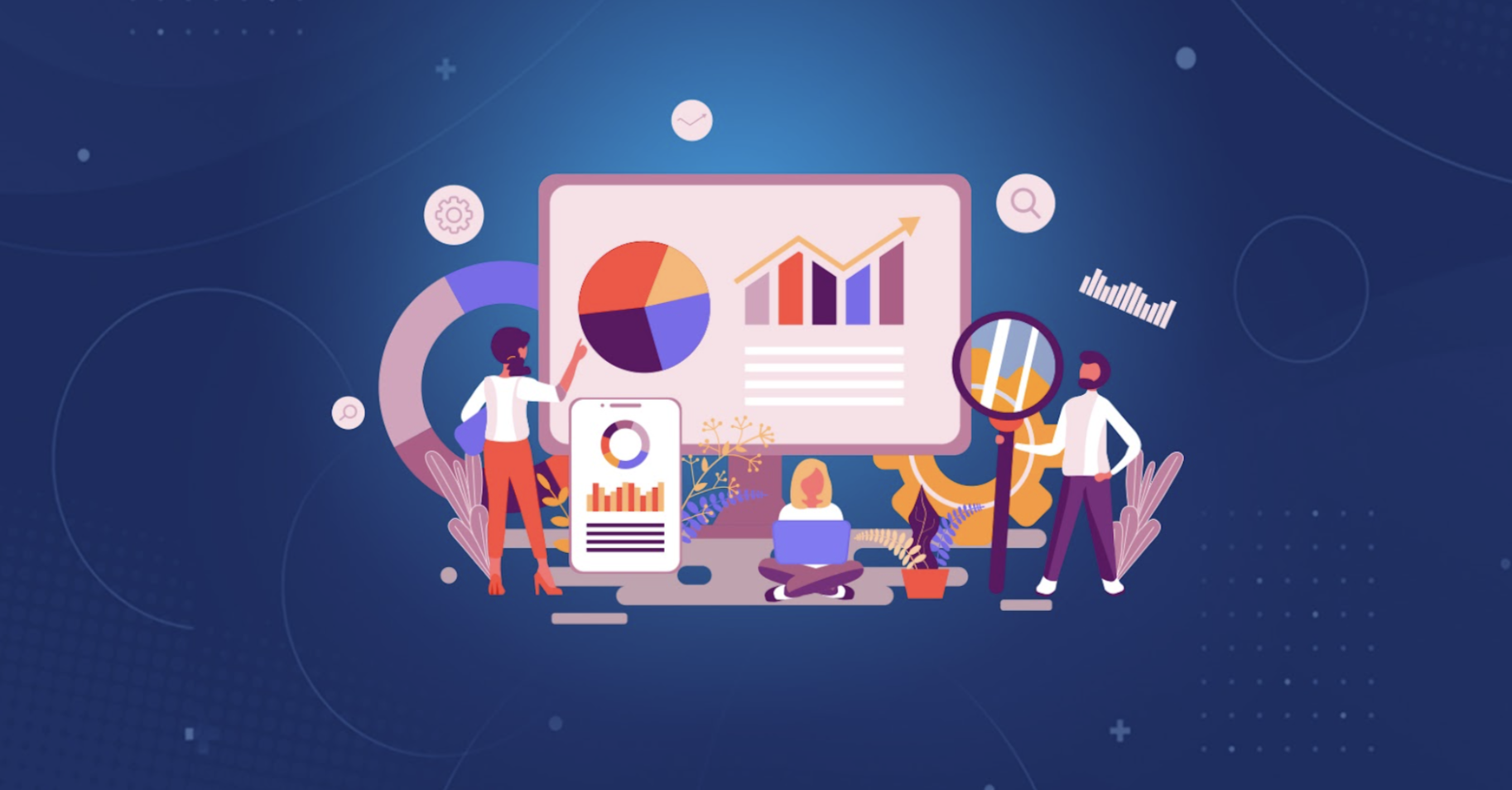
9
min read
Product Metrics: What they are, and how to use them?
If the large world of User Research for a digital product could be summed up in a paragraph, two extremes of the ...
Talent Garden
16/06/2022
